Understanding Tarantula Feeding
Tarantula feeding is a crucial aspect of responsible tarantula ownership, directly impacting your pet’s health, growth, and overall well-being. Understanding the dietary needs of these fascinating creatures is paramount to providing a thriving environment. This comprehensive guide will delve into the essential aspects of tarantula feeding, ensuring that you are well-equipped to offer the best possible care. Feeding a tarantula might seem straightforward, but there are nuances to consider, from the type of prey to the frequency of meals. By understanding these intricacies, you can ensure your tarantula lives a long and healthy life. This guide is designed to make it easy for you.
Why Proper Feeding Matters
Proper tarantula feeding is essential for several reasons. Adequate nutrition supports healthy growth, especially in spiderlings that are constantly molting and expanding. A balanced diet boosts the tarantula’s immune system, making it more resistant to diseases and infections. Furthermore, a well-fed tarantula is more likely to exhibit its natural behaviors, which include web-spinning, burrowing, and hunting. Providing the right nutrients also contributes to vibrant coloration and overall vitality. Ignoring the feeding requirements can lead to a stunted growth, weakened immune function, and even premature death. Therefore, understanding and implementing proper feeding practices is a cornerstone of responsible tarantula care.
Recognizing Hunger Cues
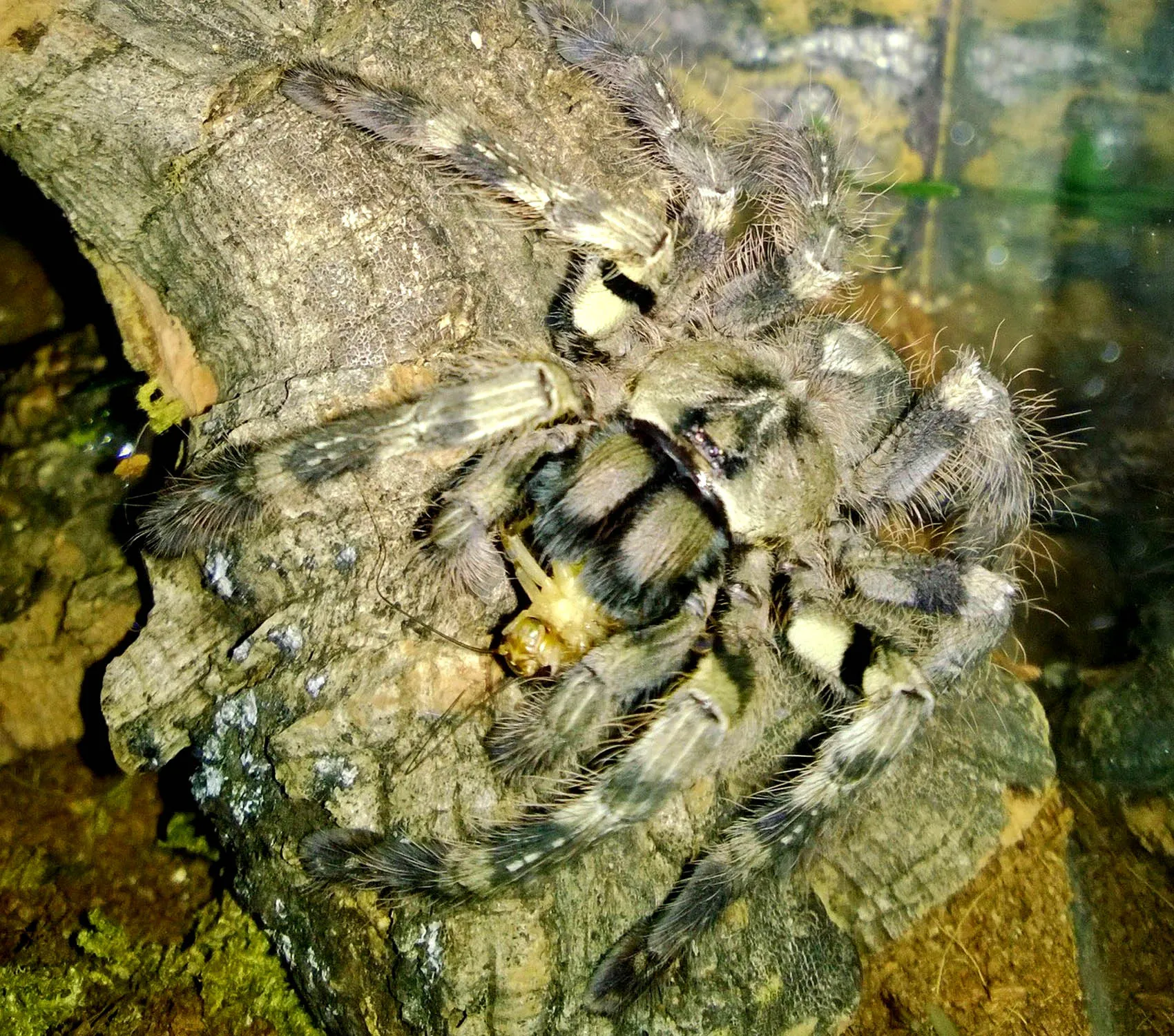
Unlike many pets, tarantulas don’t always display obvious signs of hunger. However, there are a few key indicators you can observe. A hungry tarantula may become more active, exploring its enclosure more frequently, especially during the evening hours, when they are most active. Some tarantulas will also position themselves near the entrance of their burrows, seemingly waiting for prey. Another sign is a willingness to readily accept food. If a tarantula quickly pounces on a prey item, it’s a good indication that it is hungry. Conversely, a tarantula that consistently refuses food, especially if it’s not in premolt, may have underlying health issues and you should keep an eye on it.
Top 5 Tarantula Feeding Tips
Tip 1 Offer the Right Prey
The foundation of successful tarantula feeding lies in providing the right prey. The most common and readily available options include crickets, mealworms, and dubia roaches. These insects are relatively easy to breed or purchase and provide a good source of protein. It’s important to source your prey from a reputable supplier to minimize the risk of parasites or diseases. Before feeding, make sure to gut-load the prey with nutritious food, such as fresh vegetables and fruits. This ensures that your tarantula receives the maximum nutritional benefit. Avoid feeding wild-caught insects, as they may carry pesticides or parasites that could be harmful to your tarantula.
Appropriate Prey Size
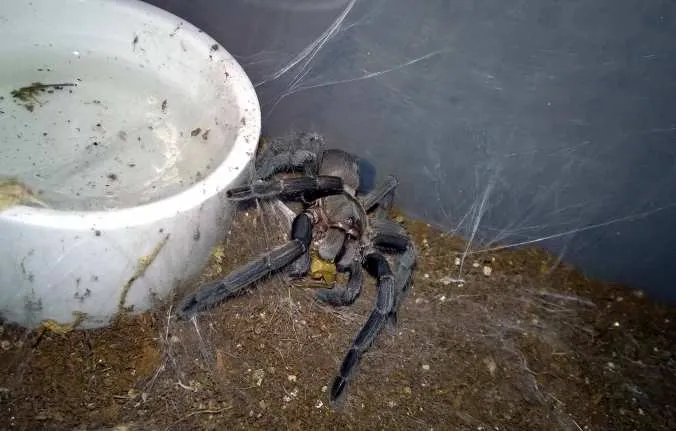
The size of the prey is very important. As a general rule, the prey should be no larger than the tarantula’s abdomen. For spiderlings, start with smaller prey items such as fruit flies or pinhead crickets. As the tarantula grows, you can gradually increase the size of the prey. Overfeeding large prey items can cause the tarantula’s abdomen to become overly distended, potentially leading to health issues. It’s always better to err on the side of caution and offer smaller, more manageable prey items. This not only ensures easier consumption but also minimizes stress on the tarantula.
Prey Variety Benefits
Offering a variety of prey can significantly enhance your tarantula’s diet. While crickets and mealworms are common staples, introducing other insects such as dubia roaches or even small locusts can provide different nutrients and keep your tarantula engaged. A varied diet ensures that the tarantula receives a broader range of essential vitamins and minerals. Variety also helps prevent nutritional deficiencies that can arise from relying on a single food source. Experimenting with different types of prey can also make feeding time more interesting for your tarantula, stimulating its natural hunting instincts. Ensure any new prey items are properly sourced and free of parasites to maintain the health of your tarantula.
Tip 2 Feeding Frequency
The frequency of feeding depends on the tarantula’s age and growth stage. Spiderlings, which are in their rapid growth phase, require more frequent meals. As the tarantula matures, the feeding frequency can be reduced. Overfeeding can lead to health problems, while underfeeding can stunt growth. It’s crucial to strike a balance that supports optimal health and development. The time between feedings is also important, to allow the tarantula to digest their food, and also to regulate their appetite.
Feeding Schedule for Spiderlings
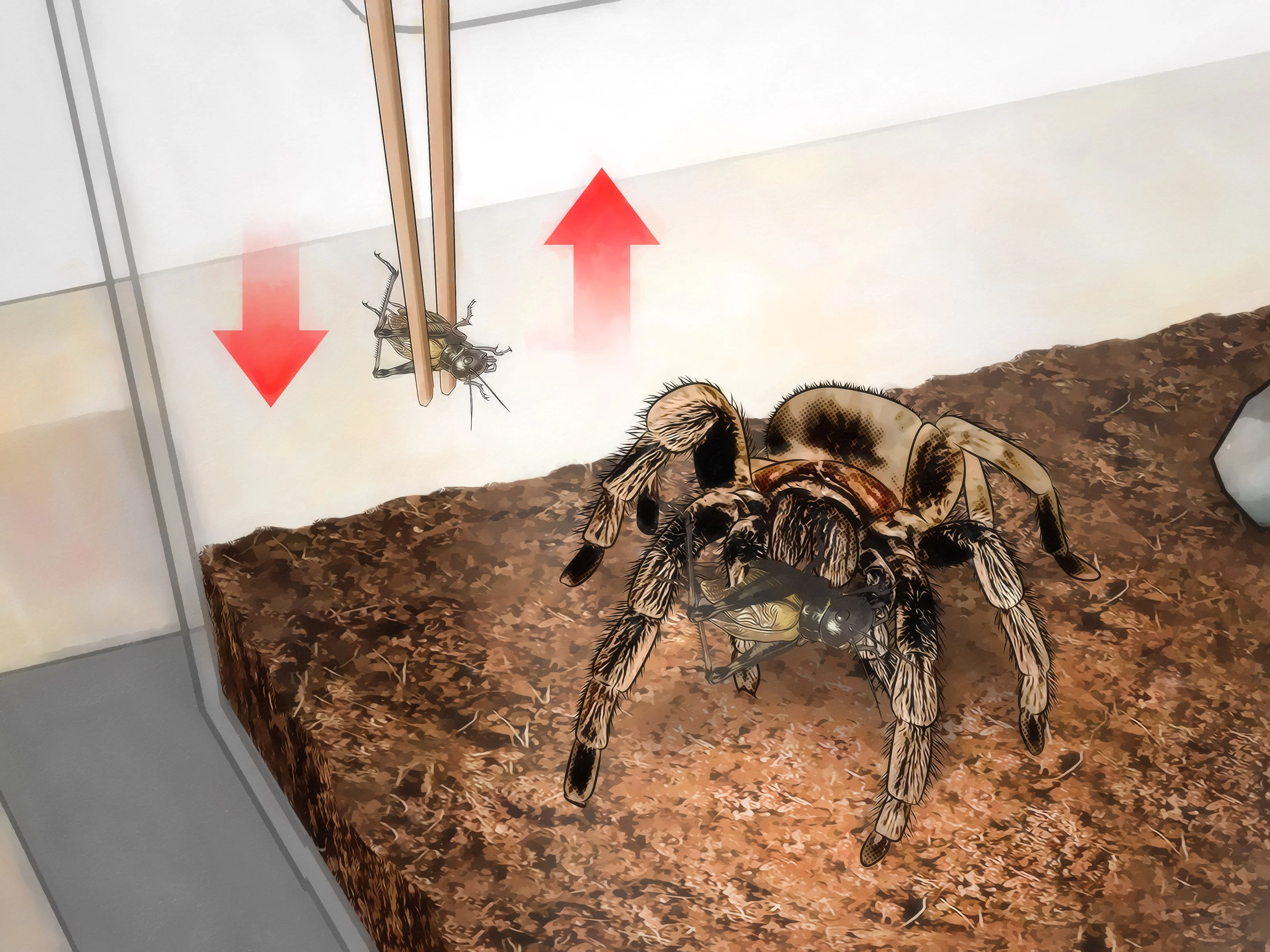
Spiderlings require a more frequent feeding schedule due to their rapid growth rate. They should be fed every other day or every three days, depending on their size and how readily they consume food. Offer small prey items such as fruit flies or pinhead crickets. Make sure to remove any uneaten prey within 24 hours to prevent them from stressing or harming the spiderling. Closely monitor the spiderling’s abdomen; it should be slightly rounded after feeding. Adjust the feeding frequency accordingly, based on their appetite and growth progress. Young tarantulas require a higher level of attention and care.
Feeding Adults
Adult tarantulas typically need to be fed less frequently, usually once or twice a week, depending on the species and individual’s appetite. Monitor their abdomen size; if it appears overly plump, reduce the feeding frequency. Offer larger prey items, such as adult crickets or dubia roaches. It’s also important to consider the tarantula’s molting cycle. Tarantulas usually stop eating a few weeks before molting, so avoid offering food during this period. Do not worry if they refuse food; this is a natural process. Return to the regular feeding schedule after they have molted and their exoskeletons have hardened.
Tip 3 Providing Water
Water is essential for a tarantula’s health and hydration. Ensuring a clean water source is as important as providing food. Dehydration can lead to serious health problems, so access to fresh water should always be available. Depending on the species and enclosure setup, there are several ways to provide water. Also consider the size of the tarantula, some of the smaller species may not be able to reach their water.
Water Bowl Essentials
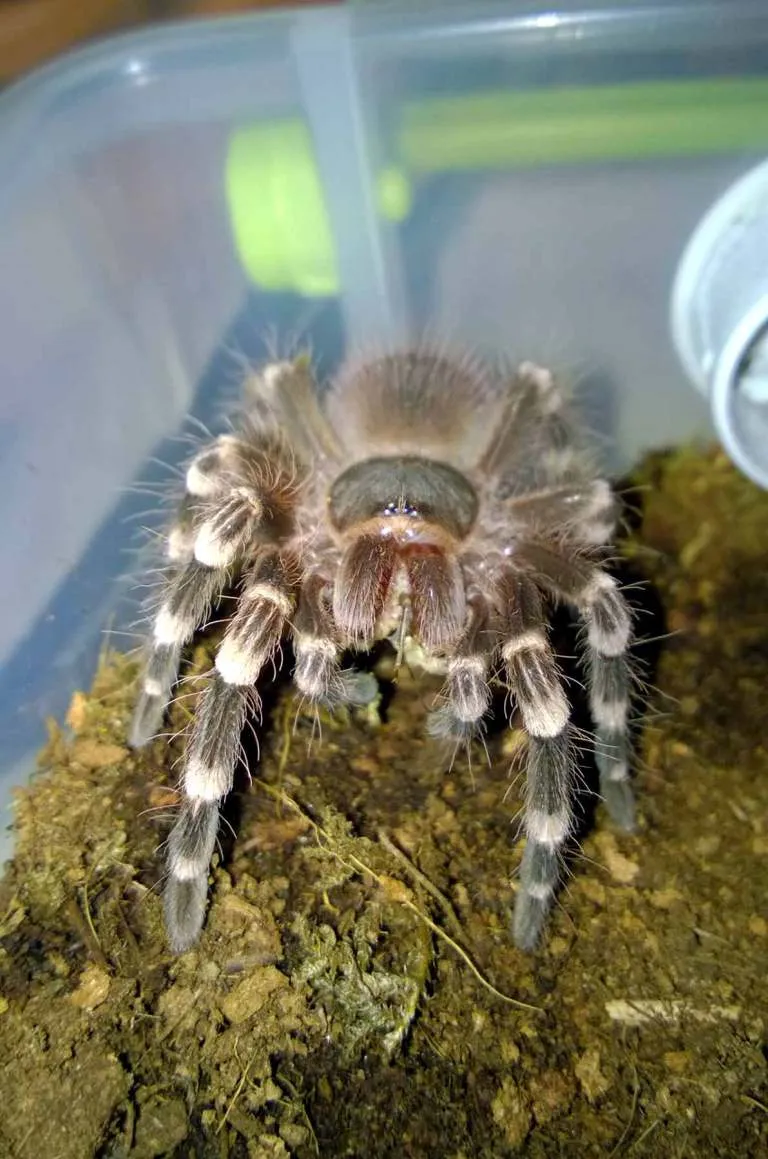
A shallow water bowl is the most common method for providing water. Choose a bowl that is stable and can’t be easily tipped over. The bowl should be shallow enough for the tarantula to access the water without difficulty. For smaller spiderlings, use a bottle cap or a small dish. Regularly clean and refill the water bowl with fresh, dechlorinated water to prevent bacteria growth. The water should always be available.
Watering Techniques
In addition to a water bowl, you can also mist the enclosure lightly, especially for species that prefer higher humidity levels. This provides an alternative source of water. Make sure that the misting doesn’t saturate the substrate, as this can lead to mold growth. When misting, use dechlorinated water at room temperature. Another option is to use a dropper to drip water onto the side of the enclosure, which can encourage the tarantula to drink. Always monitor the enclosure’s humidity levels, and adjust the watering schedule accordingly to maintain a healthy environment.
Tip 4 Safe Handling & Feeding
Handling a tarantula can be risky, therefore it’s best to avoid it whenever possible, to minimize stress to the tarantula, and reduce the risk of getting bitten. It’s crucial to always prioritize safety, both for yourself and the tarantula. This requires careful planning and execution, ensuring that feeding is a safe and stress-free experience for your pet. This also includes the safety precautions while feeding the tarantula. Be cautious if your tarantula is in pre-molt phase.
Handling Precautions
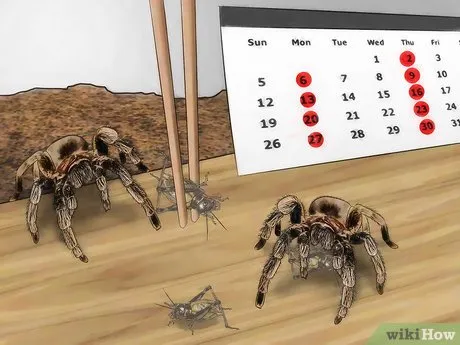
Generally, it’s best to avoid handling your tarantula unless absolutely necessary. If handling is unavoidable, do so carefully and gently. Always approach the tarantula slowly and avoid sudden movements. Use a soft brush to gently guide the tarantula into a container. Never pick up a tarantula with your bare hands, as they can bite if they feel threatened. If a bite occurs, seek medical attention immediately, even if the bite appears minor. Be aware of the tarantula’s temperament and signs of stress, such as defensive postures or fleeing behavior. Remember that handling is a stressor for the tarantula, so minimize it.
Feeding Safety
When feeding, use long tongs or tweezers to offer the prey to the tarantula. This keeps your hands away from the tarantula’s fangs. Avoid feeding prey items directly by hand. Do not leave uneaten prey in the enclosure for extended periods. If the tarantula doesn’t eat the prey within 24 hours, remove it. This helps prevent the prey from stressing or harming the tarantula. Be mindful of the tarantula’s molt cycle; avoid feeding during premolt. Always wash your hands thoroughly after handling the tarantula or its enclosure, and it is better to keep an eye while feeding to avoid any unwanted issues.
Tip 5 Cleaning and Maintenance
Maintaining a clean enclosure is vital for your tarantula’s health. Regular cleaning prevents the buildup of waste and reduces the risk of disease. Cleanliness also creates a healthier environment for the tarantula to thrive. This includes removing uneaten prey, the remains, and replacing substrate. Implementing these cleaning protocols promotes both the tarantula’s well-being and the overall sanitation of the habitat. Always be mindful of the tarantula and keep the environment safe for your pet.
Removing Uneaten Prey
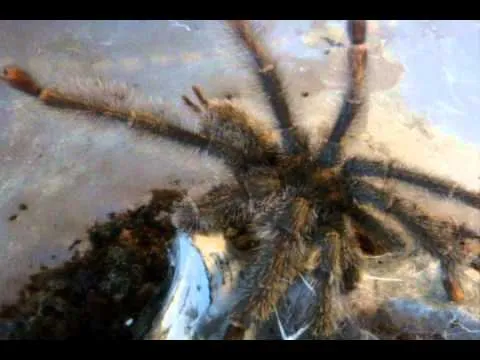
After feeding, keep an eye on the enclosure for any uneaten prey. Remove any uneaten crickets, mealworms, or other insects within 24 hours. Uneaten prey can stress the tarantula, especially during a molt, or in extreme circumstances, they can even attack it. Use tongs or tweezers to safely remove the prey without disturbing the tarantula. Regularly check the enclosure for any dead prey, and remove them promptly to maintain cleanliness and prevent the spread of diseases. Prompt action prevents any potential hazard and maintains the environment.
Maintaining a Clean Enclosure
Regularly clean the enclosure to remove waste, molted exoskeletons, and uneaten prey remains. Spot-clean the enclosure weekly, removing any visible waste. Replace the substrate every few months, or as needed. Make sure to use appropriate cleaning solutions that are safe for tarantulas. Never use harsh chemicals, as they can be toxic. Maintaining a clean enclosure promotes a healthy environment for your tarantula and supports its overall well-being. Ensure proper ventilation during cleaning to prevent a build-up of fumes, and handle cleaning with care.
Common Tarantula Feeding Mistakes
Even with the best intentions, mistakes can happen when feeding a tarantula. Avoid the common pitfalls to ensure the health and happiness of your pet. Being aware of these mistakes can help you correct your practices and maintain a proper feeding routine. Being mindful of how you handle your tarantula and its environment is a continuous learning process, and avoiding these mistakes will make your life and your pet’s life better.
Overfeeding is a common mistake. Feeding too frequently or offering prey that is too large can lead to obesity and other health problems. Overfed tarantulas may also experience difficulties during molting. Another mistake is neglecting to provide fresh water. Dehydration is a serious threat to a tarantula’s health, and lack of water can cause severe complications, especially in drier climates. Using the wrong type of prey can also lead to nutritional deficiencies. Always offer a varied and balanced diet. Finally, failing to clean the enclosure regularly can lead to bacterial buildup and illness. Regular maintenance and a careful approach to feeding ensure your tarantula thrives.
